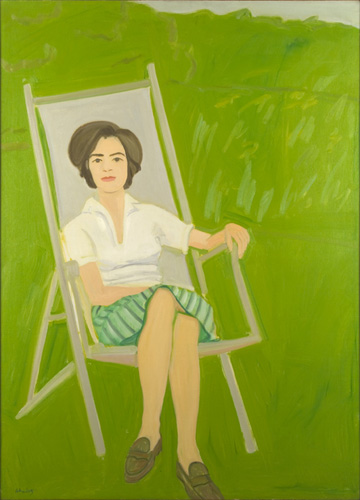The Classics
One of the best things about modeling is the variety of artistic endeavors I get to witness. MECA and USM give me exposure to wackier ways of drawing, and I recently worked a lot with a classical Atelier trained artist, Joshua Langstaff. I posed for a class he taught at an art school called Sanctuary Arts in Elliot, Maine. It was called "The Classical Figure," and involved one pose for the entirety of the ten-week session. The length of this pose was completely different from anything I'd done before and led me to ponder different artistic approaches. Joshua is a pretty dedicated Atelier purist, a product of the current resurgence of realism. He was trained, and hopes to train others, in the same fashion as classic academy artists throughout the centuries. As someone who attaches a good amount of importance to tradition, I have a lot of affection for this kind of artistic training. It is a way for an artist to truly connect to the art of the past, and I'm impressed by the dedication of an artist who wants to start with the same level of technical skill (or at least training) as great artists who came before. They spend years drawing before being allowed to move onto paint, spending more than ten hours on drawings that will later be covered in painstaking layers of oils. A "short pose" to Joshua was three hours long.
However, I find there to be a lot disdain for more abstract artwork and artists in realist circles. I sense an undercurrent of judgement for any artist that would make art without first learning to perfectly render the human form. On the other hand, I know many looser artists look down on classical painting, writing it off as unimaginative and soulless. I see where each of these criticisms originates, yet they support narrow perspectives I have no interest in perpetuating.
Sarah provided me with one way of explaining how people could land so one-sided on the issue of classical vs. avant-garde. As someone who does not identify as an artist I can't entirely understand the usefulness of art that influences the way someone decides to paint. I'm trained to reocognize similarities, but when I look at a painting in a gallery I get to look at it without needing anything from it.
Sarah explained that she looks at art two different ways: for pleasure, or for what it does for her artistically. As someone who looks at the evolution of the artistic process I have the luxury of using all art to developing a perspective on the discipline in general. An artist once asked me if I liked Impressionist art. I was blown away anyone had the notion I might not like art that completely changed the course of artistic theory. I can't relate at all to the frustration of an artist looking at art that means nothing to their development.
My exposure to the vitriol on either side of the classical/avant-garde debate leads to my own attempt remove overzealous criticism from my own perspective. I want to take full advantage of being on the philosophical rather than the practical side of the artistic process. I've been trying to change my reaction to art that doesn't speak to me; to find out what language it's using rather than just walking away. I've started spending more time on works I don't like at first, trying to figure out what I don't like, then exploring why I dislike it. I have access to these diverse and outspoken perspectives, and I'm going to milk them for all it's worth.


